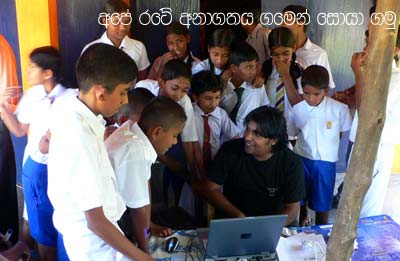25 Oct 2017
Let Us Learn Robotics: Microbit සූවිශේෂත්වය

සරළ උදාහරණය : Quick Example
https://makecode.microbit.org/_MRoJrKEcFWt5
Microbit comes with built in accelerator. You can measure x,y,z rate of change of the velocity of an object in meters per second squared (m/s2) or in G-forces (g). A single G-force for us here on planet Earth is equivalent to 9.8 m/s2. Accelerometers are useful for sensing vibrations in systems, orientation and flying drones.
If you like this lesson , share it with your group & friends Join microbit club. https://goo.gl/vWvohs
Understanding accelerometer data
Accelermeters measure *acceleration* and express this as three values which we refer to as X, Y and Z. These values are "vectors" meaning they express both a magnitude (amount) and direction.
In the case of the BBC micro:bit, with the micro:bit held flat with its LED display facing upwards and the edge connector facing toward you, the X value measures the amount of acceleration to the left and right of you.
Y measures the acceleration in the direction away from you or back towards you whilst Z measures acceleration up or down. So X and Y describe acceleration in the two horizontal planes whereas Z measures acceleration in the vertical plane.
The micro:bit uses values which are in multiples of one "milli-g" i.e. one thousandth of the acceleration due to gravity. Bitty Data Logger scales the values up to be relative to g itself.
#FrontierInnovators #Shilpa64 #AlogoHack #microbit #SriLanka
Subscribe to:
Posts (Atom)

